How to Grow Beautiful Zinnias Indoors From Seed
Have you dreamed of growing a cut garden full of beautiful zinnia flowers? I’ll share my tips on growing zinnias from seed indoors, how to transplant seedlings into the garden, and caring for them throughout the season.
Zinnias are beautiful cut flowers that are perfect for beginner gardeners. They’re extremely easy to grow and maintain and are one of the most reliable annual flowers in the summer garden.
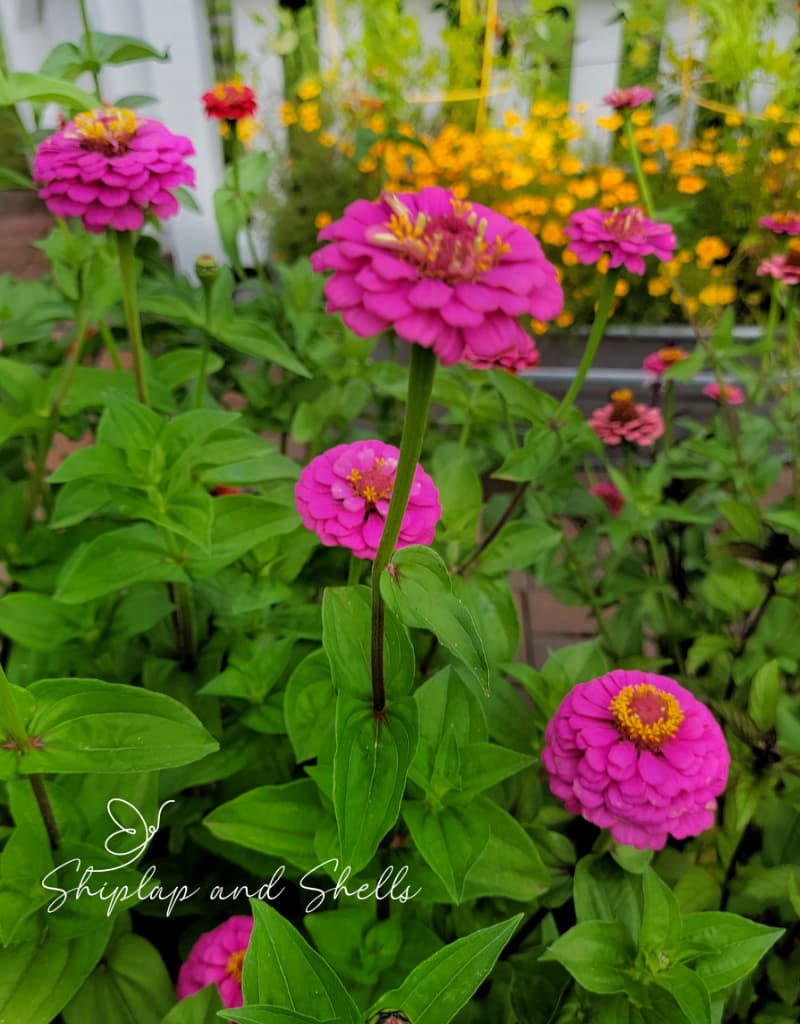
As an Amazon affiliate, I earn from qualifying purchases at no extra cost to you. My blog contains other affiliate links for your convenience as well. Click here to read my privacy policy.
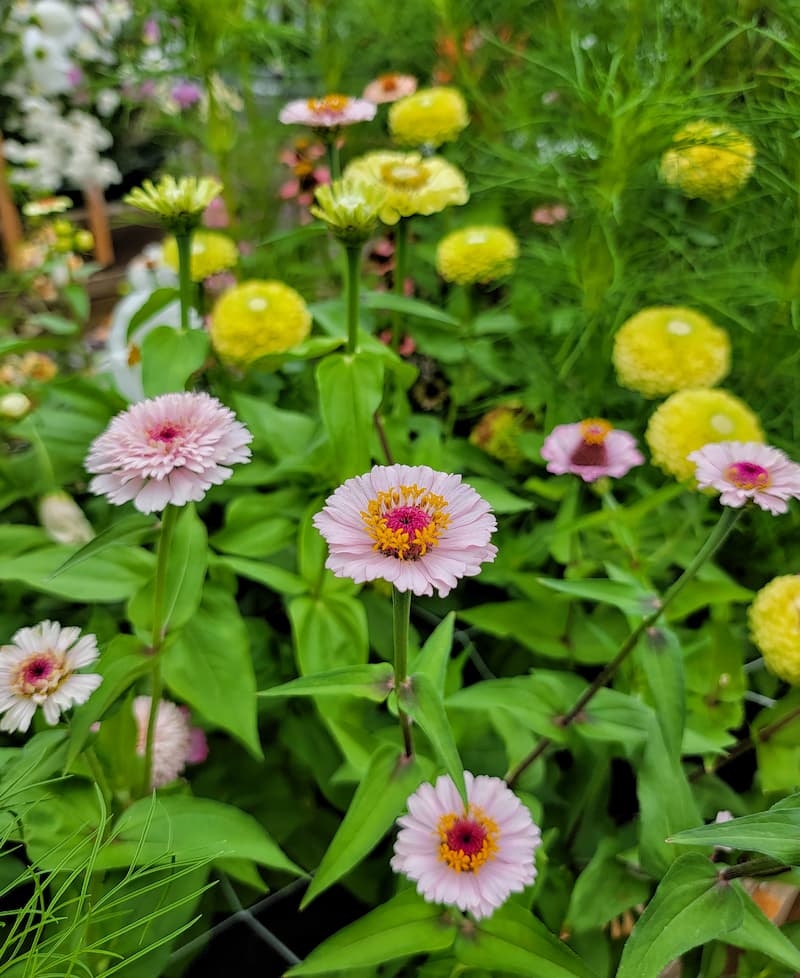
Why are Zinnias the Perfect Cutting Flower to Grow?
Zinnias are the perfect cut flower for any summer or early fall bouquet.
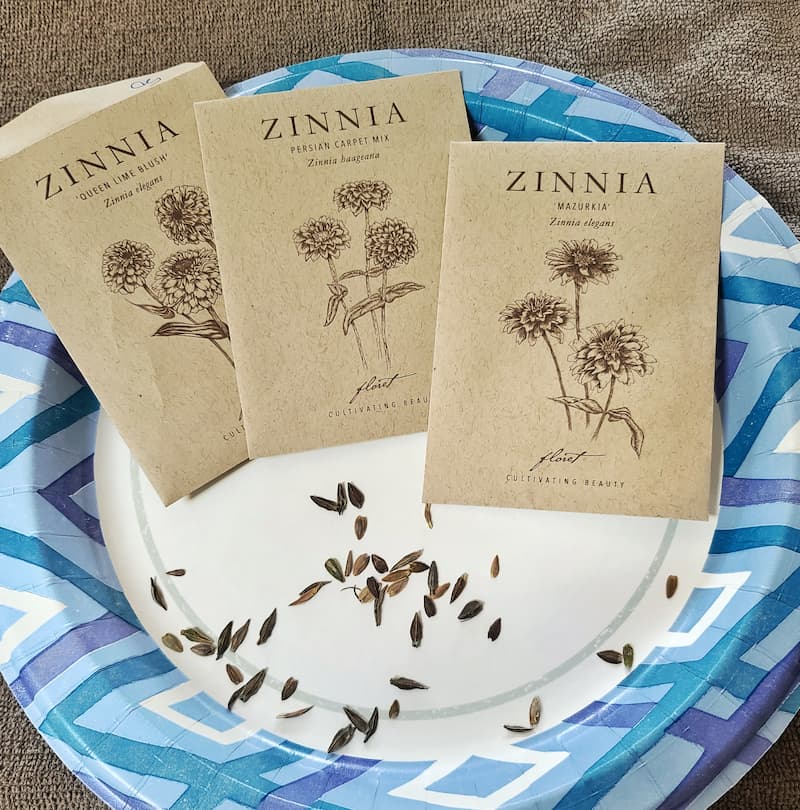
When to Grow Zinnias Indoors from Seed
When starting indoors, sow zinnia seeds 4-6 weeks before the season’s last frost. You can find your average last frost date here.
If you plant zinnia seeds earlier than the recommended time frame, the seedlings will quickly outgrow their pots before the weather has warmed enough to put them out into the garden.
Zinnias can also be sown directly in the ground as soon as the threat of freezing has passed.
Seed Starting Supplies
Check out my favorite supplies and tools for starting seeds indoors. Whether you’re looking for grow lights or a seed starting mix, you’ll find what I use in my own greenhouse.
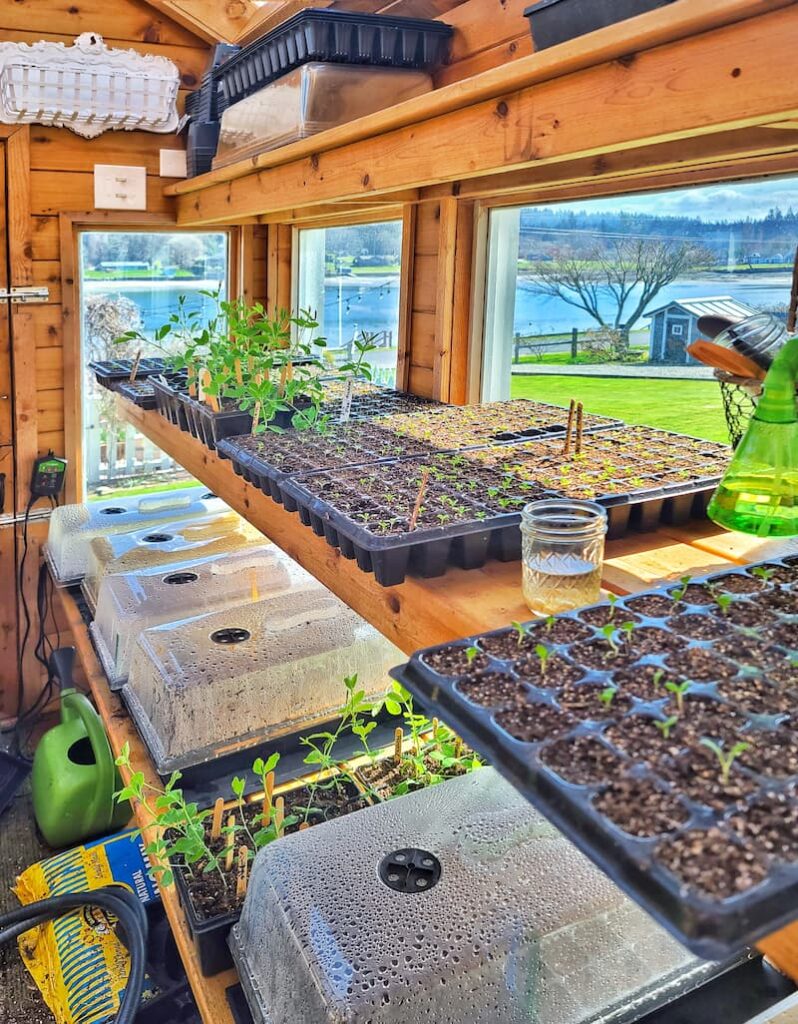
Supplies You’ll Need to Sow Zinnia Seeds
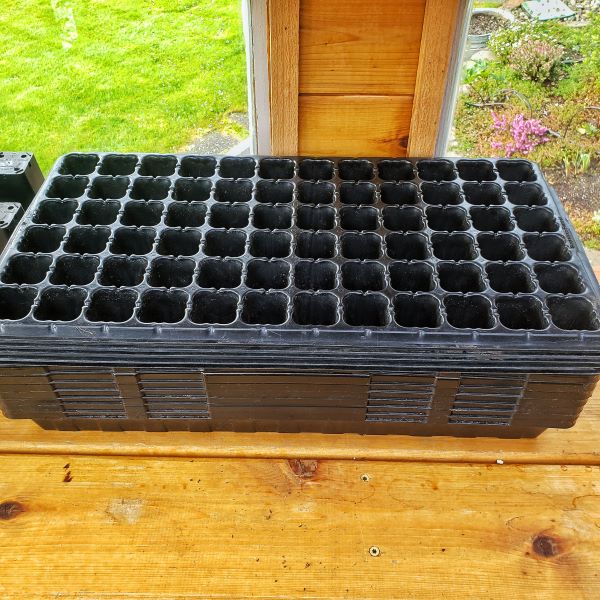
Steps for Sowing Zinnia Seeds Indoors
Step 1 – Choose a Clean Plant Container With Drainage Holes
Seed-starting containers should be clean and have drainage holes. You can read my blog post, Supplies Needed for Seed Starting, for several container options. I use cell trays and plastic pots for my seed containers.
If you’re reusing old plastic containers or trays, wash them thoroughly with a 1-part bleach/ 9-part water solution to help kill any lingering diseases or pathogens.
You can read more about how to clean your used containers in my post, Seed Starting 101 – Growing a Cut Flower Garden Series.
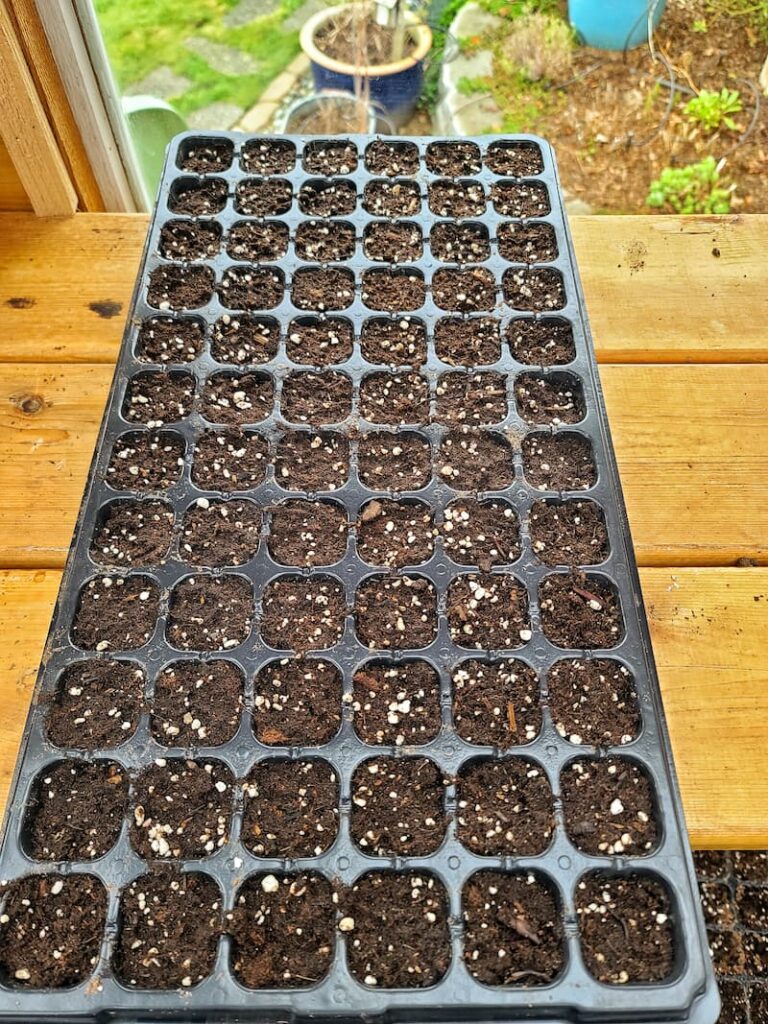
Step 2 – Fill Containers with Moistened Seed Starter Mix
Before adding seed starting mix or potting soil to the container or seed trays, moisten until thoroughly damp but not soaking wet.
Fill the cell trays or container to the top with the moistened seed starter mix. As you go, tap firmly against the table or shelf to ensure the soil settles and prevent air pockets in the containers.
Benefits of Using a Seed Starting Mix
I recommend using a quality organic seed starter potting mix rather than a regular potting soil when sowing your zinnias seeds for the following reasons:
You can make the seed starting mix go even further by filling the bottom half of the container with regular potting soil and then filling the rest with the seed starting mix, where the seeds will be placed.

Step 3 – Label or Tag the Containers
Label the container with the name of the variety of plants and the date planted.
You would be surprised by how easy it is to forget what you’ve planted in a particular container after only a few days.
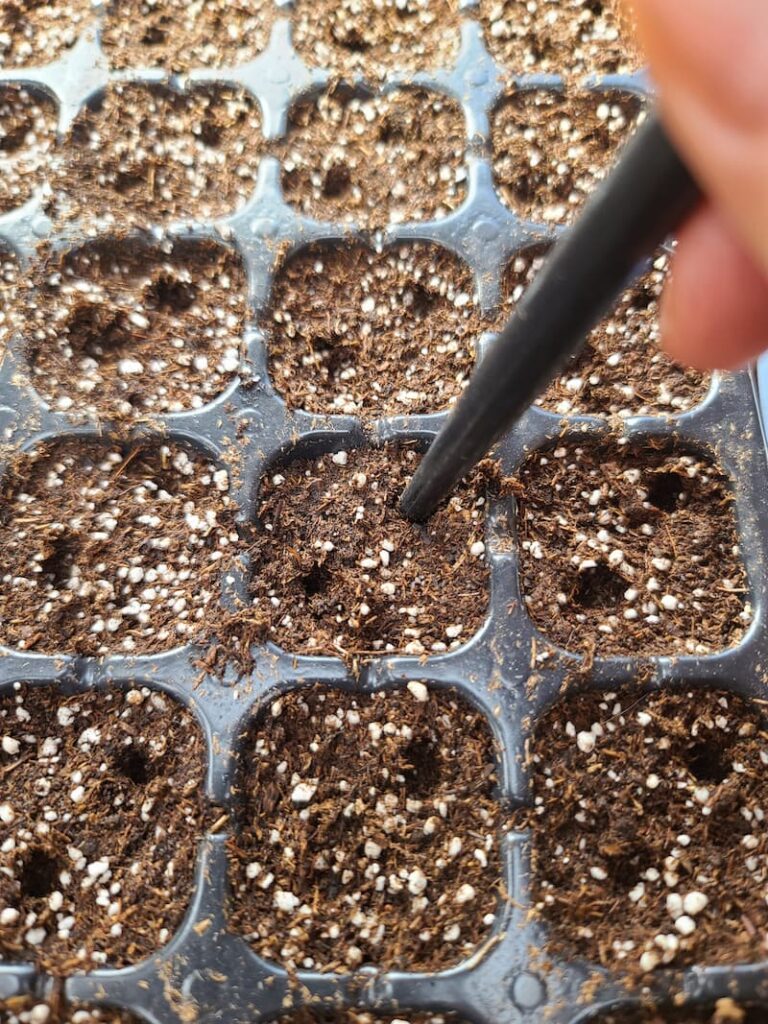
Step 4 – Sow the Zinnia Seeds
Sow two seeds per container or cell by creating a 1-half-inch hole into the soil in 2 opposite corners. You can use a pencil, dibbler, or even your finger to make a hole.
Add a light dusting of seed starter potting mix or vermiculite, covering the seeds.
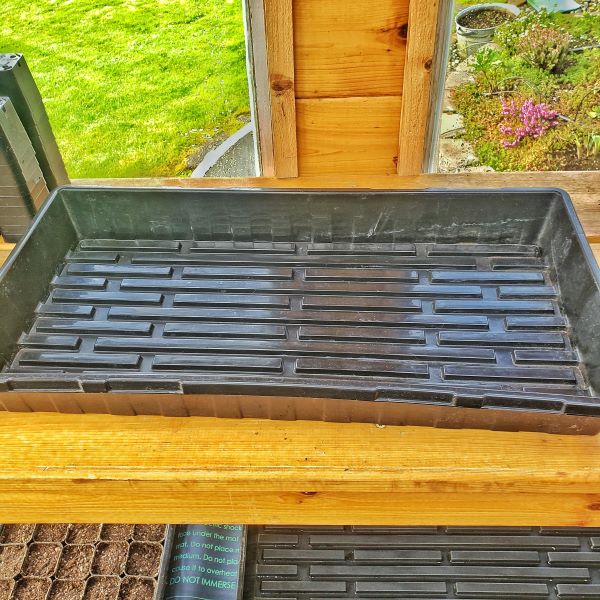
Step 5 – Bottom Water Your Seed Containers
After sowing the flower seeds, set the container in a drainage tray with an inch of water in the bottom if needed. It’s important not to let the container sit in the water for more than an hour.
It’s important not to overhead water after you’ve placed the seeds in the container. You may wash the seeds away and have to start the process over again.
Watering from the bottom allows the roots to be watered thoroughly.
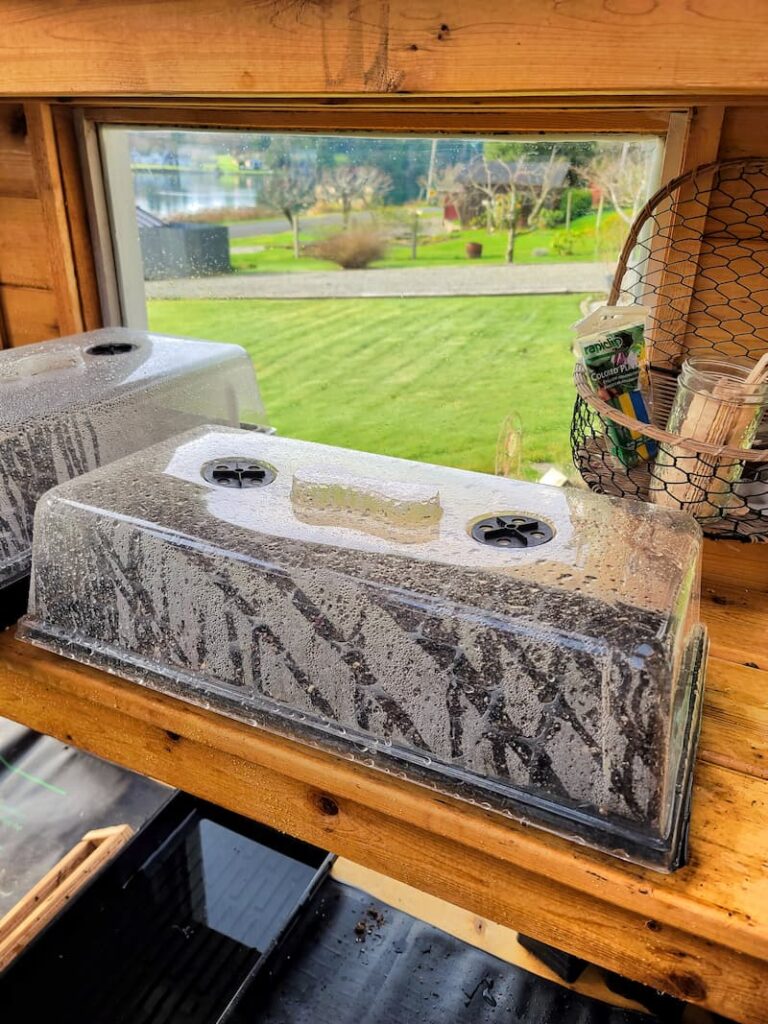
Step 6 –Place Seed Container on a Heat Mat and Cover
Place the container on a heated mat or in a warm corner of your house, and cover it with a clear plastic dome. This will help speed up the seed-starting germination process.
Step 7 – Pick the Indoor Right Location
Keep your seed starts in a light and bright space, such as a greenhouse or sunroom. If you don’t have that option, keep the seedlings under a grow light.
Step 8 – Continue Watering
Continue to check the soil moistness every 2-3 days. Bottom water again as needed.
Check your containers every other day or so and bottom water when the soil looks and feels dry. Remove the tray of water once the soil surface is evenly moist.
‘Growing a Cut Flower Garden’ Series
Learn about the ins and outs of growing a cut flower garden this year. Click the button below to be taken to the entire series of blog posts and choose what is interesting to you.
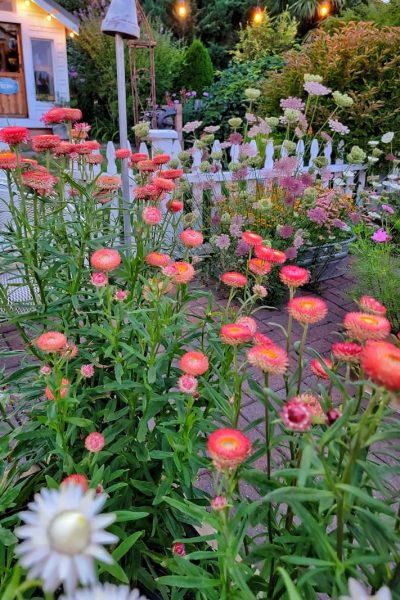
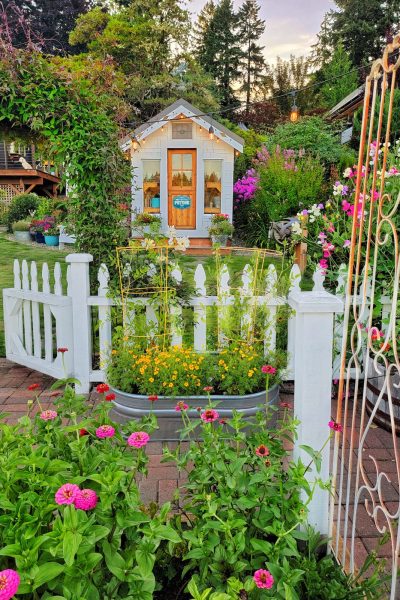
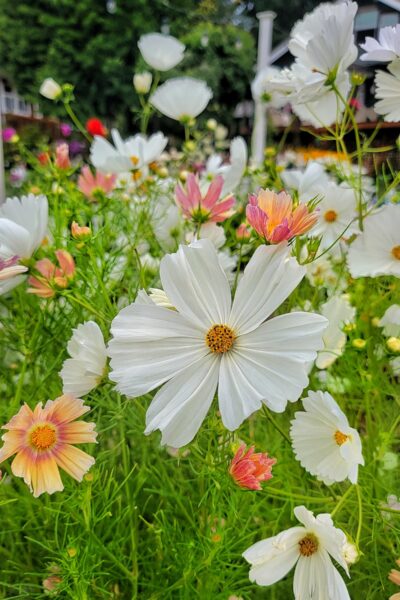
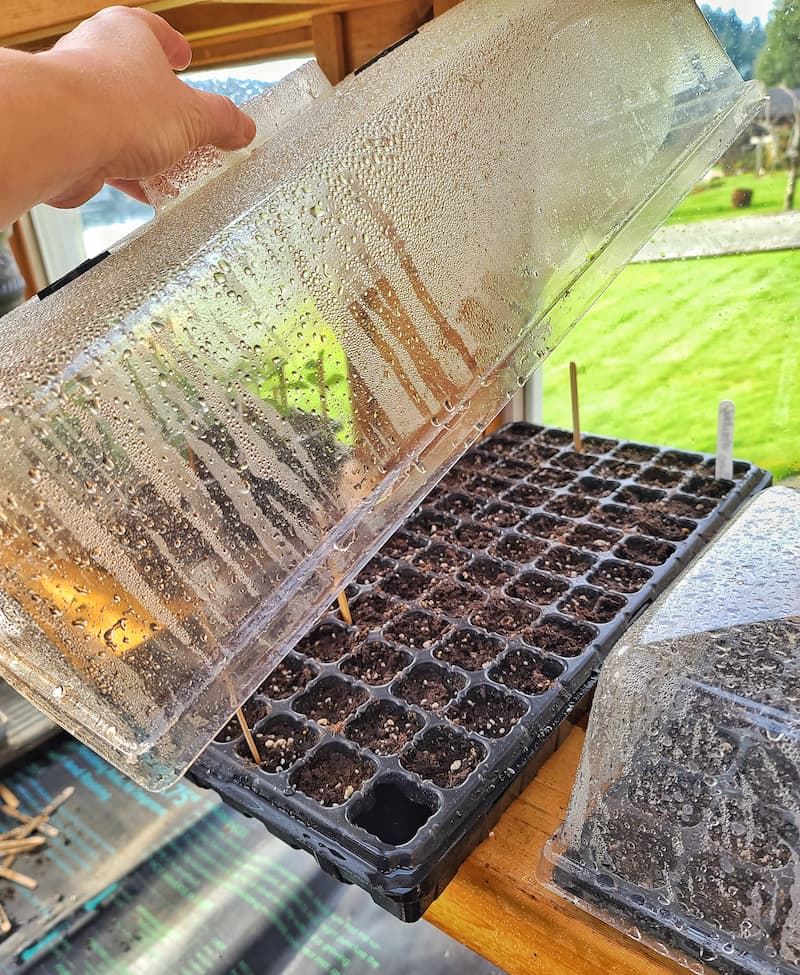
Growing Zinnias After the Seeds Have Germinated
Step 1 – Remove Heat Mat and Uncover the Container
Check the seed container daily. Once the seeds have germinated and the sprouts are visible, remove the clear dome lid and the seedlings from the heated mat.
Step 2 – Continue to Water When Needed
Check the seedlings daily to ensure the soil doesn’t dry out.
The very first leaves that appear on the young plants are called cotyledons. Be sure to bottom water your seedlings until you see the first real leaves that appear after the cotyledons.
Once those second sets of leaves appear, water with a gentle spray from a watering can or hose when needed, usually every 1-2 days.
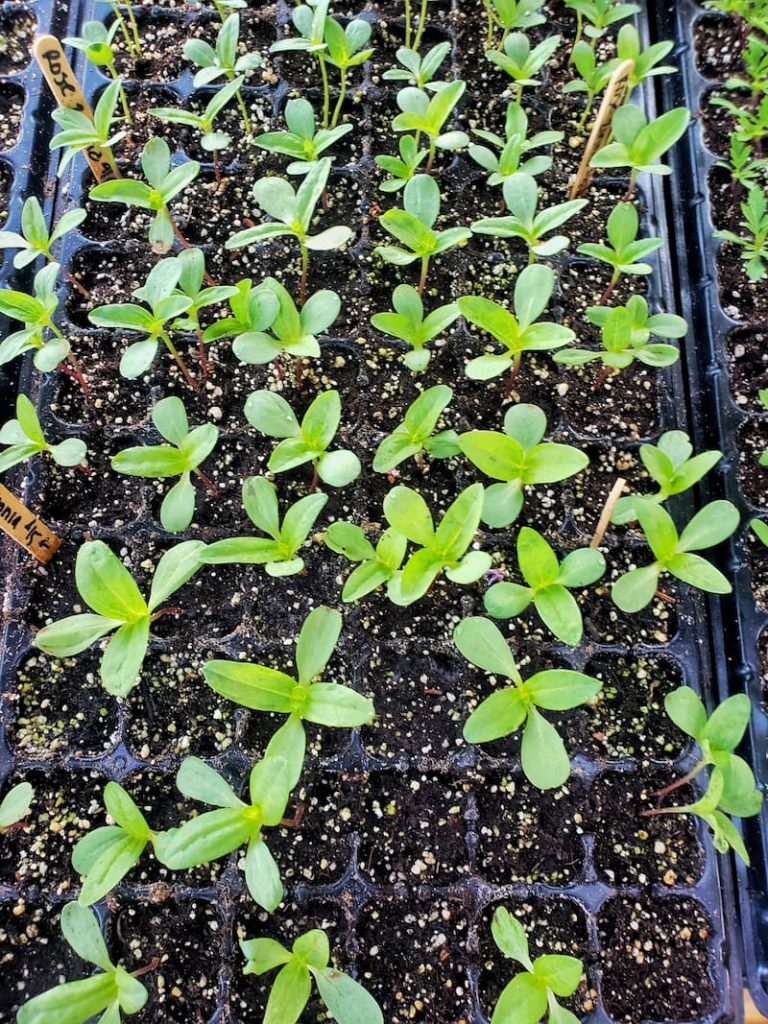
Step 3 – Transplant the Zinnia Seedlings if Needed
If your seedlings start to outgrow their containers before they’re ready to be planted outdoors, you’ll need to transplant them into a larger container while still growing inside. It’s important to give the roots more room to grow.
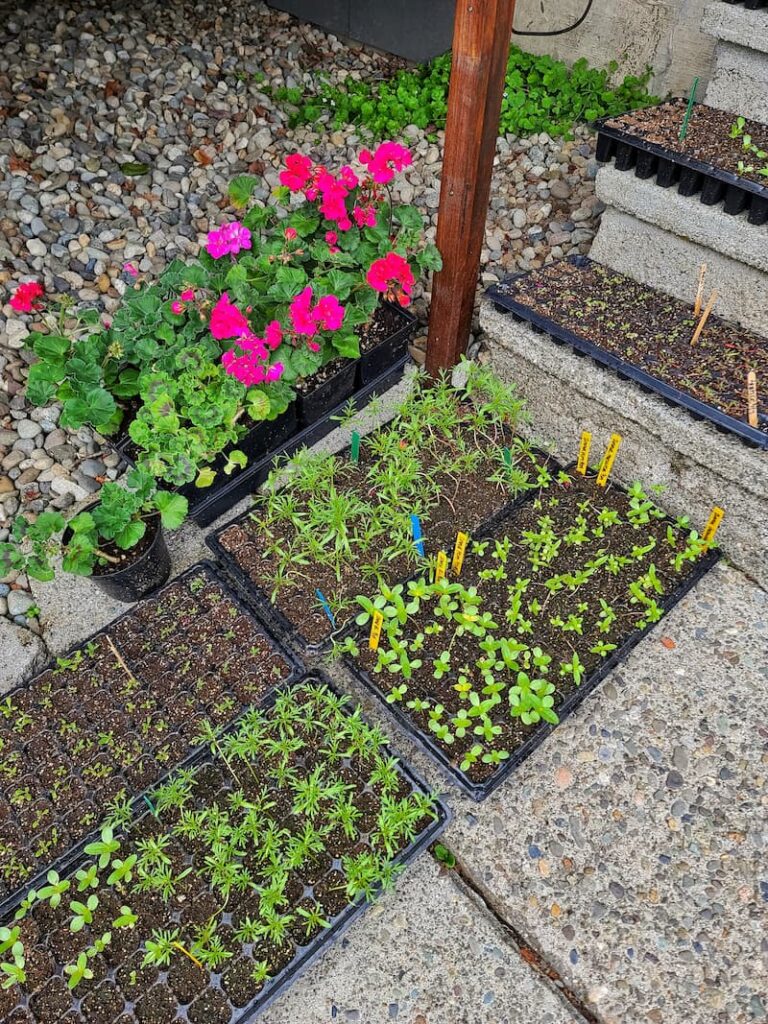
Step 4 – Harden Off the Zinnia Seedlings
After all danger of frost has passed, you can begin “hardening off” your zinnia plants before transplanting them into the garden flower beds.
Don’t skip this process! Your plants will go into shock by the sudden change in temperature.
Set the containers in a sheltered spot outdoors, increasing the time they spend outside each day over a week or two. I usually start with 2-3 hours on the first day.
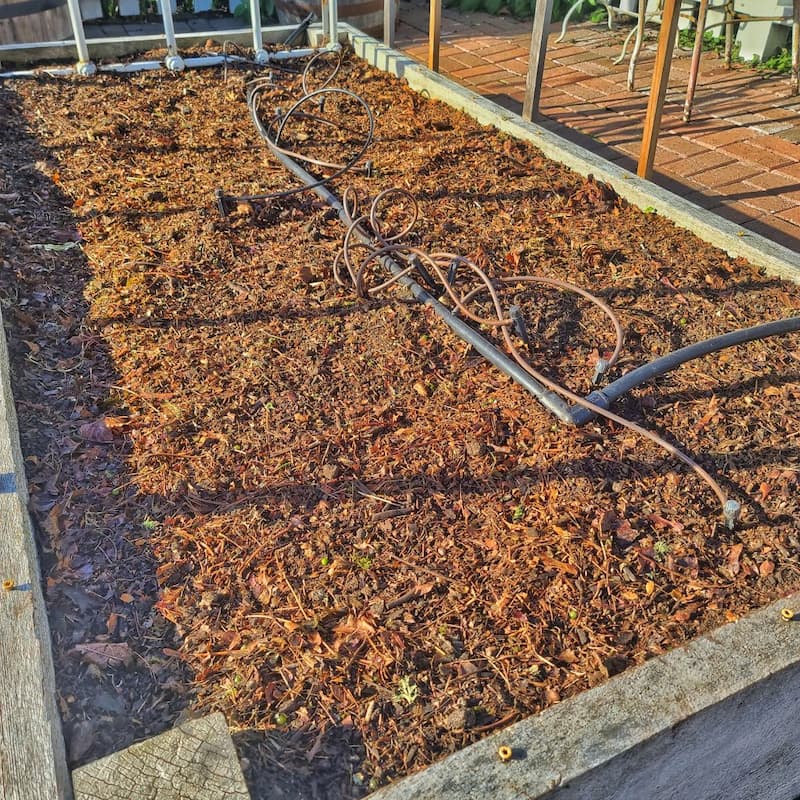
Prepare the Garden Beds for Zinnia Seedlings
Zinnias love heat and full sun, so plan for a location to meet their needs.
This annual plant can be adaptable to most soil conditions. But zinnias will thrive when planted in well-drained soil and organic matter is added.
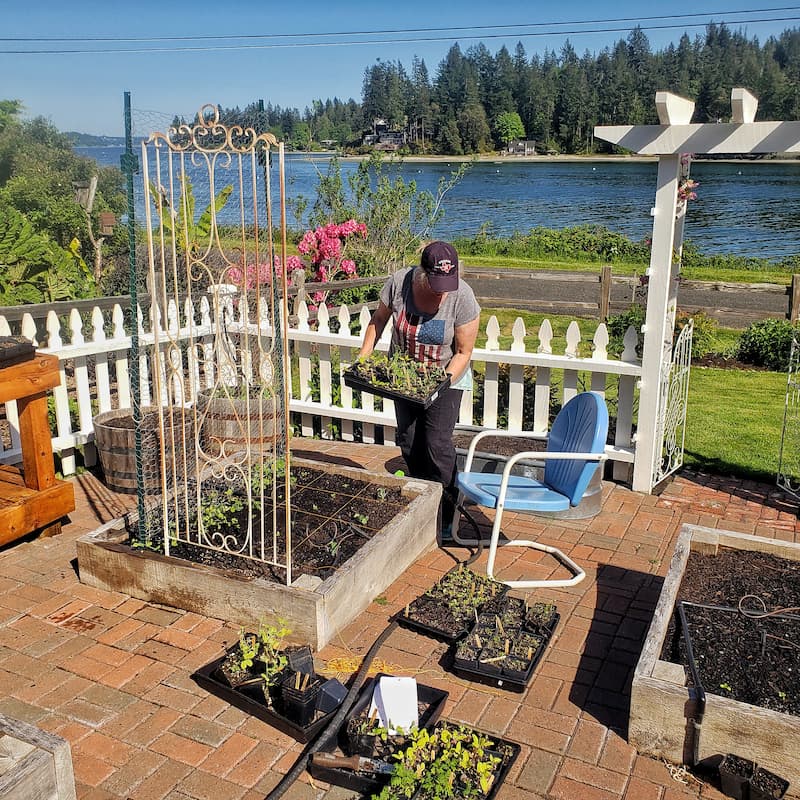
After acclimating to the outdoor temperatures, transplant the zinnia seed starts into the garden once the threat of frost has passed.
It’s recommended to succession sow zinnias every 2-3 weeks to have non-stop blooming into fall. I have never had to do that. I’ve always had colorful flowers until the first frost.
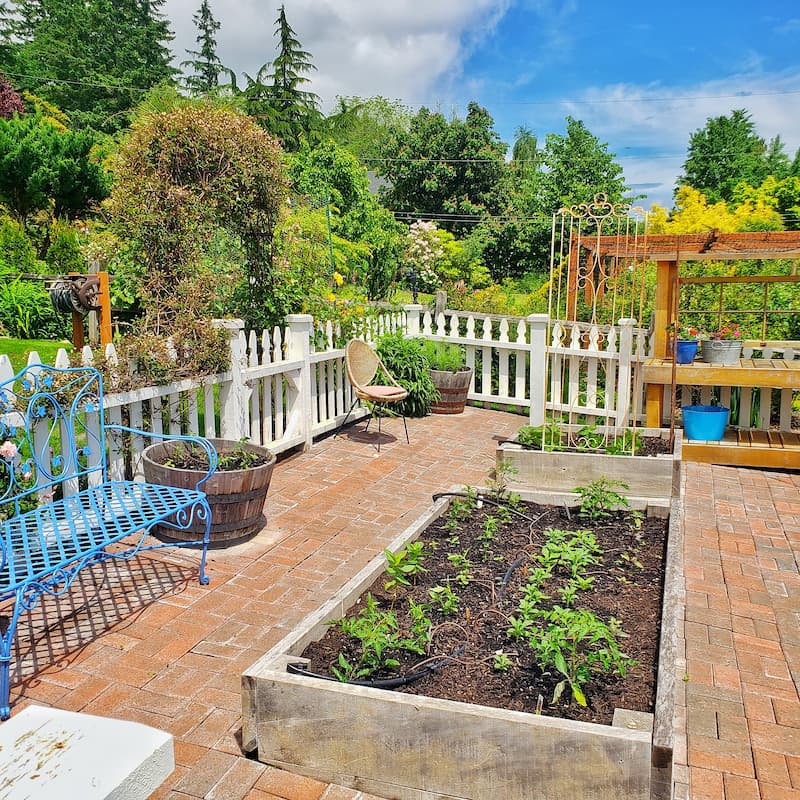
Check the back of your seed packet for spacing directions. Zinnia plants get very bushy and need extra room to spread out, so space plants at least 9-12 inches apart.
Give zinnias lots of space. Good air circulation will help prevent pests and fungal diseases like powdery mildew.
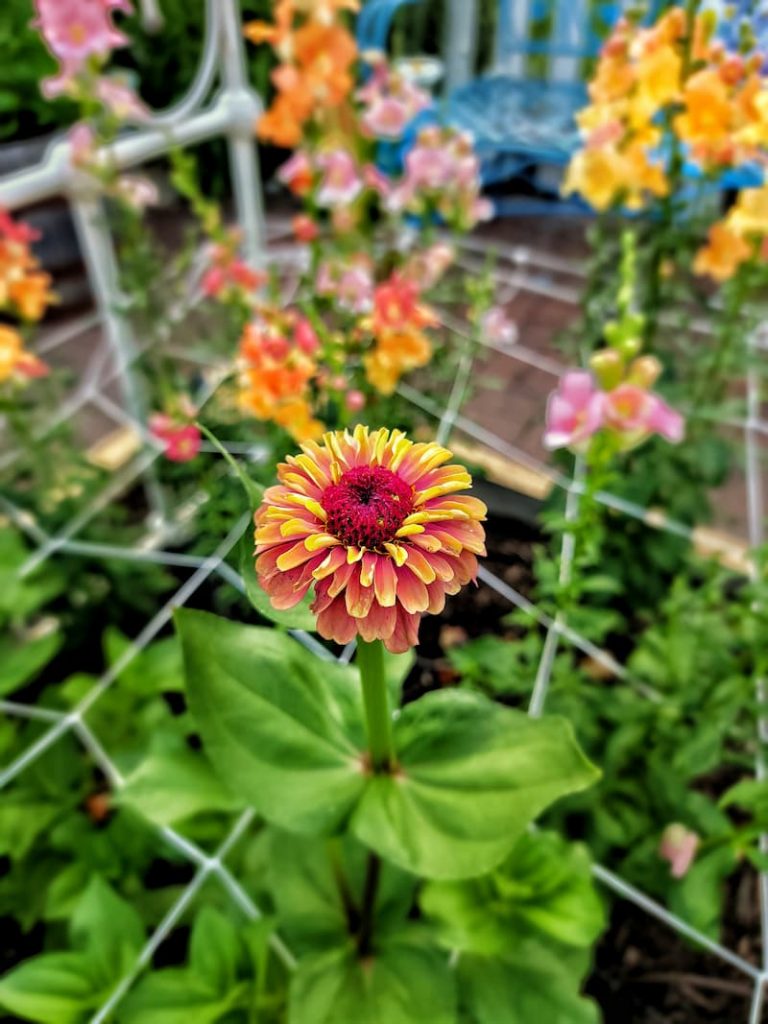
Transplant Zinnia Seedlings to the Garden
Care Plan for Your Zinnias
Support Plants Early
Once planted in the ground, zinnias grow quickly, so be sure to stake them early while they are still young.
I use both the corral method and netting to support my zinnias.
As the plant’s long stems grow taller, add another layer of twine or raise the netting to keep the wind and hard rains from damaging the zinnias.
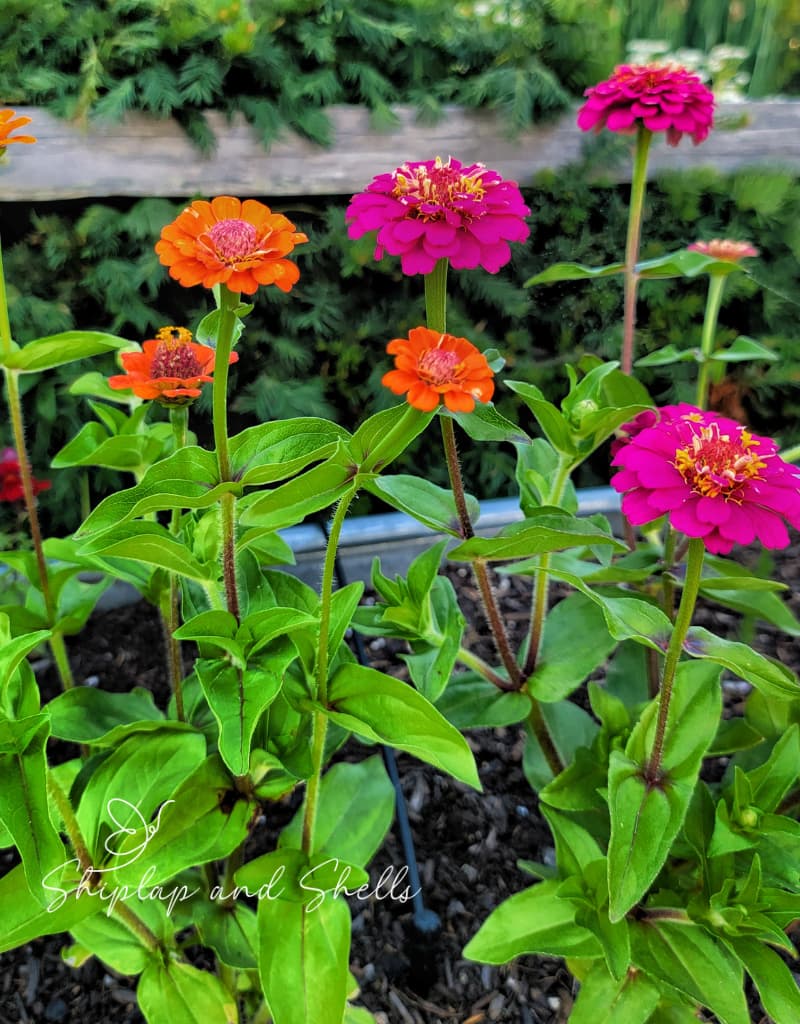
Water Your Zinnias Regularly
Create a plan to make sure your zinnias will be watered regularly in the garden.
I set up soaker hoses and drip irrigation in the raised garden beds for convenience and efficiency. These watering systems ensure that my zinnias will never dry, even when I’m on vacation.
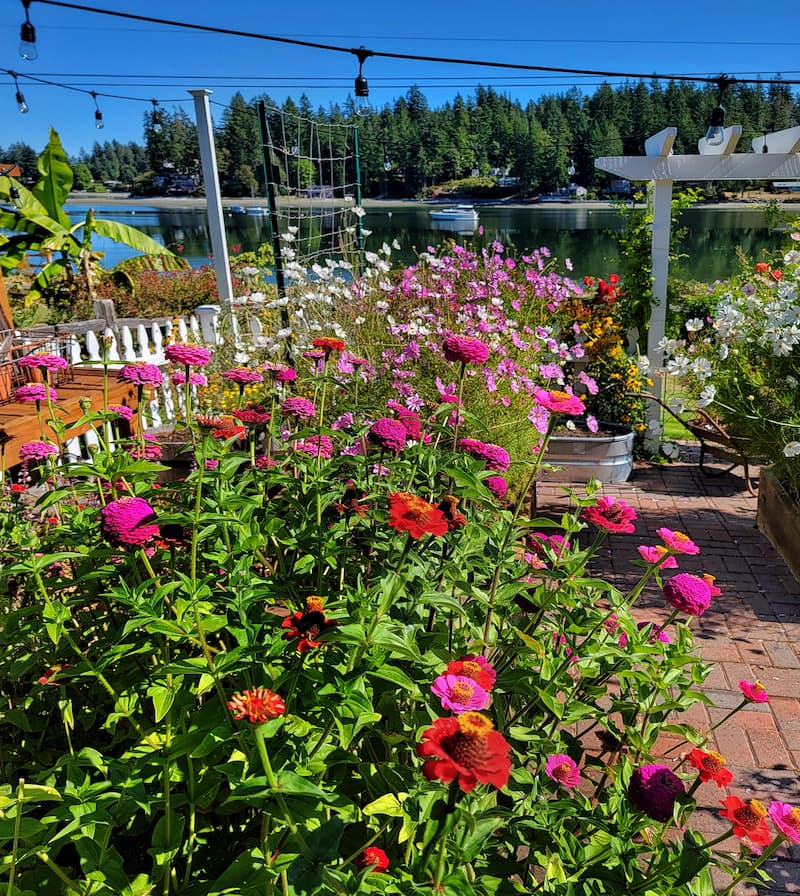
Pinch Zinnia Plants
To get the longest stems possible, you should pinch them when they’re young seedlings.
Once the zinnia plants are 12 inches tall and have at least three sets of leaves on each stalk, snip 3-4 inches off the top, just above the leaf joint, with clean, sharp pruners.
Pinching the seedling signals the plant to send up multiple stems and side shoots from below where the cut was made.
Here are some of the benefits of pinching…
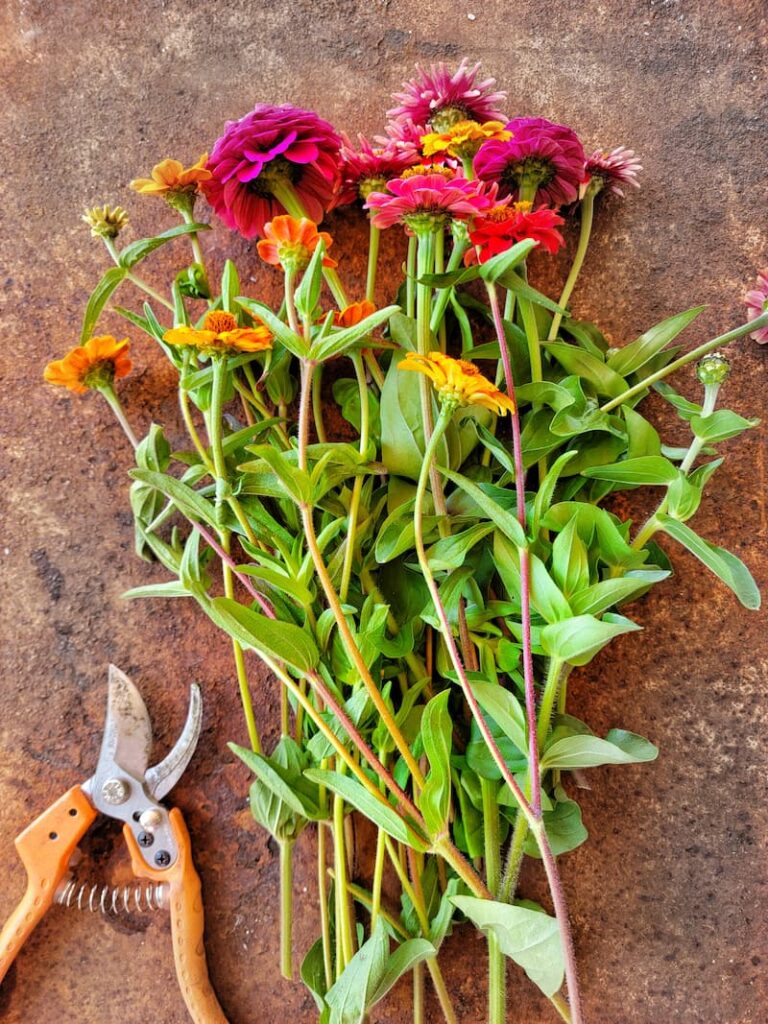
Harvest Your Zinnias for More Blooms
Zinnias should be cut when fully seasoned or mature. Hold the stem about 8 inches below the flower head and shake it gently.
If the stem bends or is droopy, it’s not ready to be harvested. But strong stems are a sign that the flower is ready to be harvested.
Zinnias are considered a “dirty flower,” which means the water in the vase will discolor faster than other flowers. Add a drop or two of bleach to the water to help it stay clean.
The freshly harvested zinnia flowers should last 7-10 days in a vase if flower preservatives are added. They are very cold-sensitive, so it’s important not to put them in a cooler.
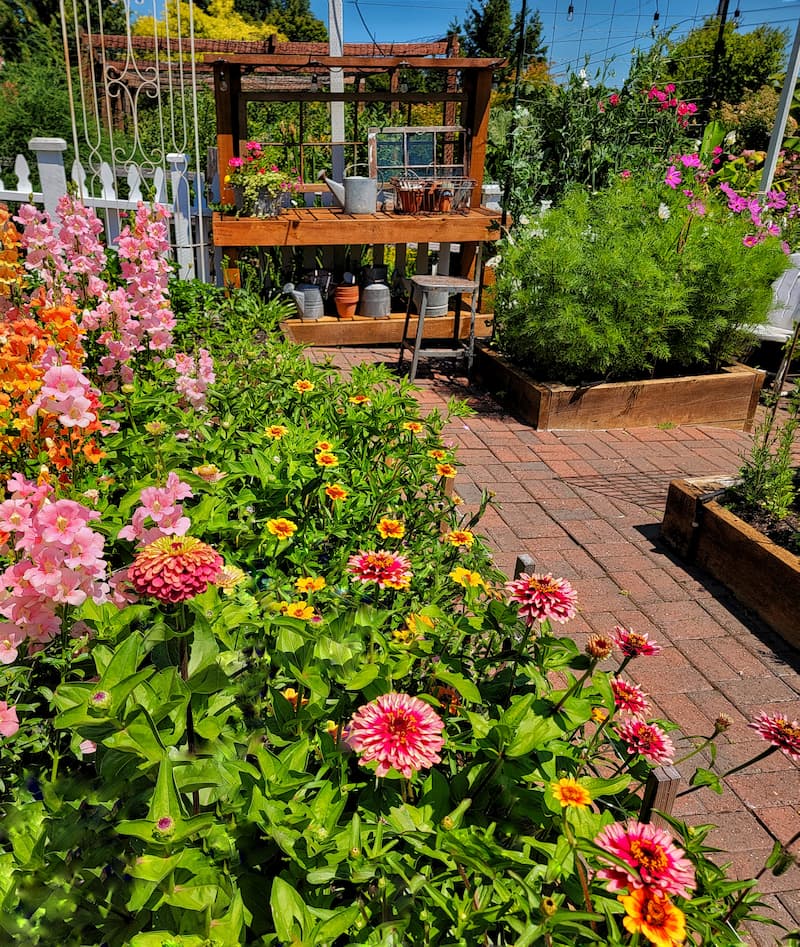
Deadhead Spent Flower Heads
If there are spent flower heads, even after harvesting your zinnias, be sure to deadhead them to help focus the plant’s energy on producing new flowers without going to seed.
Deadheading is the process of trimming the old flowers, which encourages new plant growth.
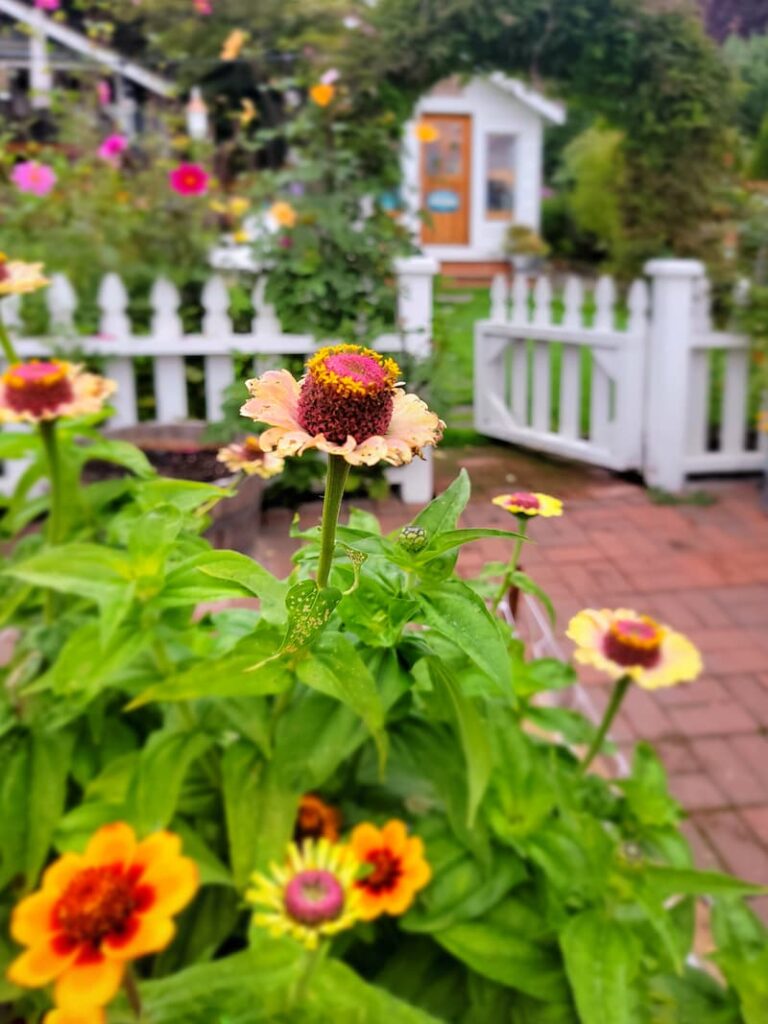
The Most Common Mistakes Made When Growing Zinnias
Do you want to grow the most beautiful zinnias? Avoid these common mistakes, and you’ll be a pro in no time.
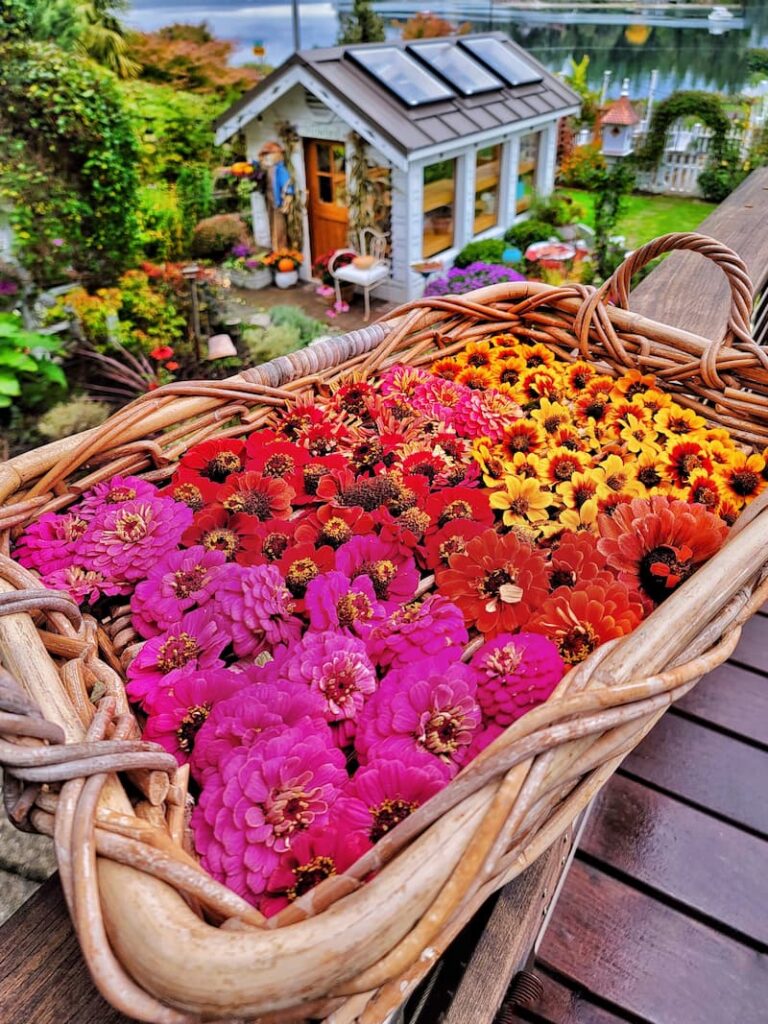
Common Questions About Zinnias
Do Zinnias Come Back Every Year?
Zinnias are annual plants, so they don’t return every year. Annual flowers complete their life cycle in one year.
Save the seeds of your zinnia flower heads and sow them the following year.
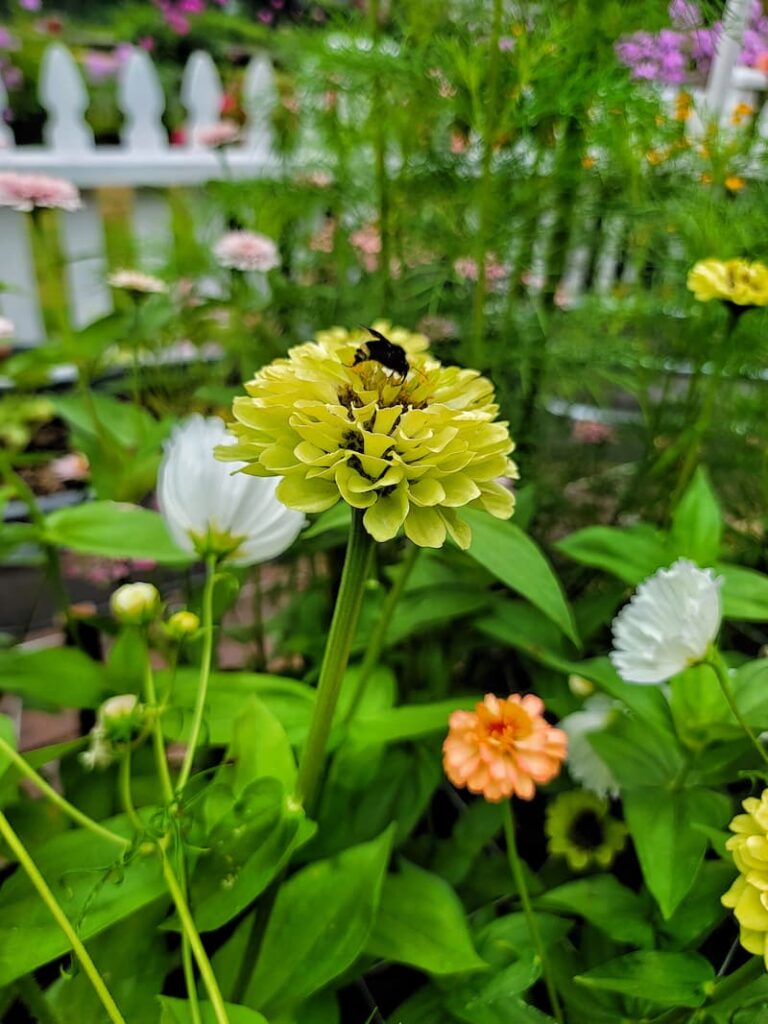
How Long Do Zinnias Bloom?
Zinnias usually start blooming in early spring and die off after the year’s first frost.
How Tall Do Zinnias Grow?
A: Most zinnias grown for cut flowers are taller varieties and grow between 1-4 feet. The tallest zinnias are in the Benary’s Giant Series and grow as high as 4 feet.
Zinnia plants you find at a nursery or garden center tend to be shorter varieties suitable for planting in window boxes and flower containers.
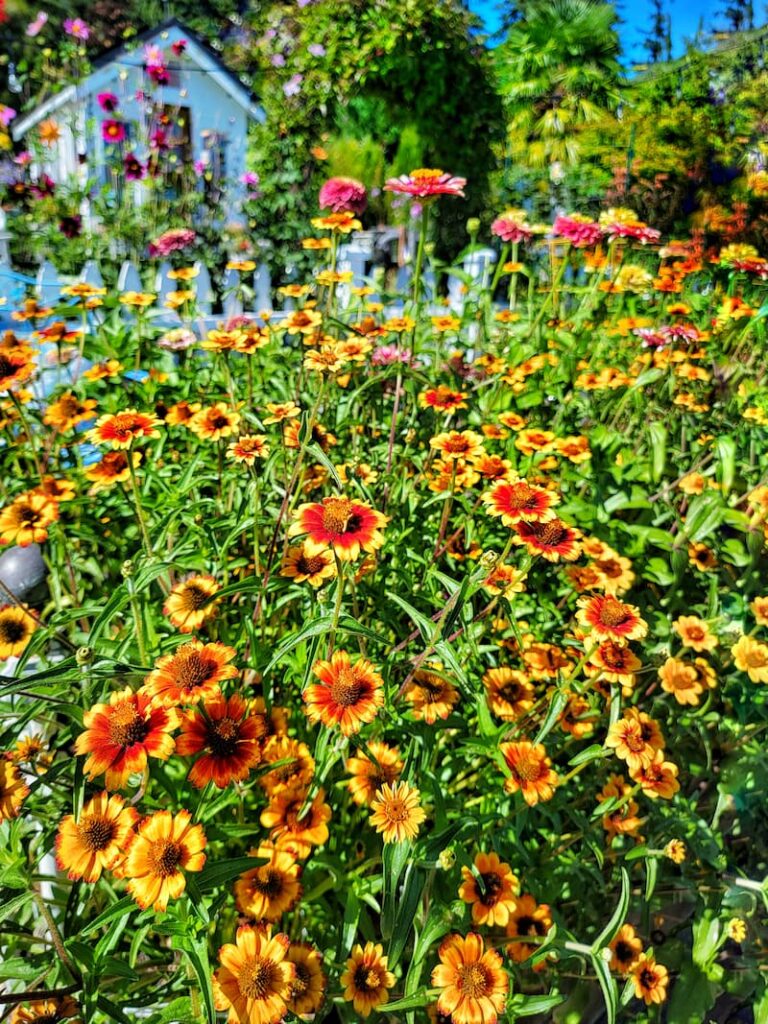
Do Zinnias Need Full Sun?
Yes, they need 6-8 hours of full sun.
When Do You Plant Zinnias?
Plant zinnia seedlings in late spring after the danger of frost has passed.
How Hard is It to Grow Zinnias?
Zinnias are one of the easiest flowers to grow from seed and are low maintenance. The seeds germinate quickly.
Do Zinnias Have Pest and Disease Issues?
Spacing your plants in the garden beds as directed will minimize the risk of spreading disease. Use horticultural oils or insecticidal soap to treat any disease or pest problems.
Garden Supplies and Tools
Check out my favorite garden supplies and tools for the growing season. Whether you’re looking for potting soil or deer repellent, you’ll find what I use in my own garden.
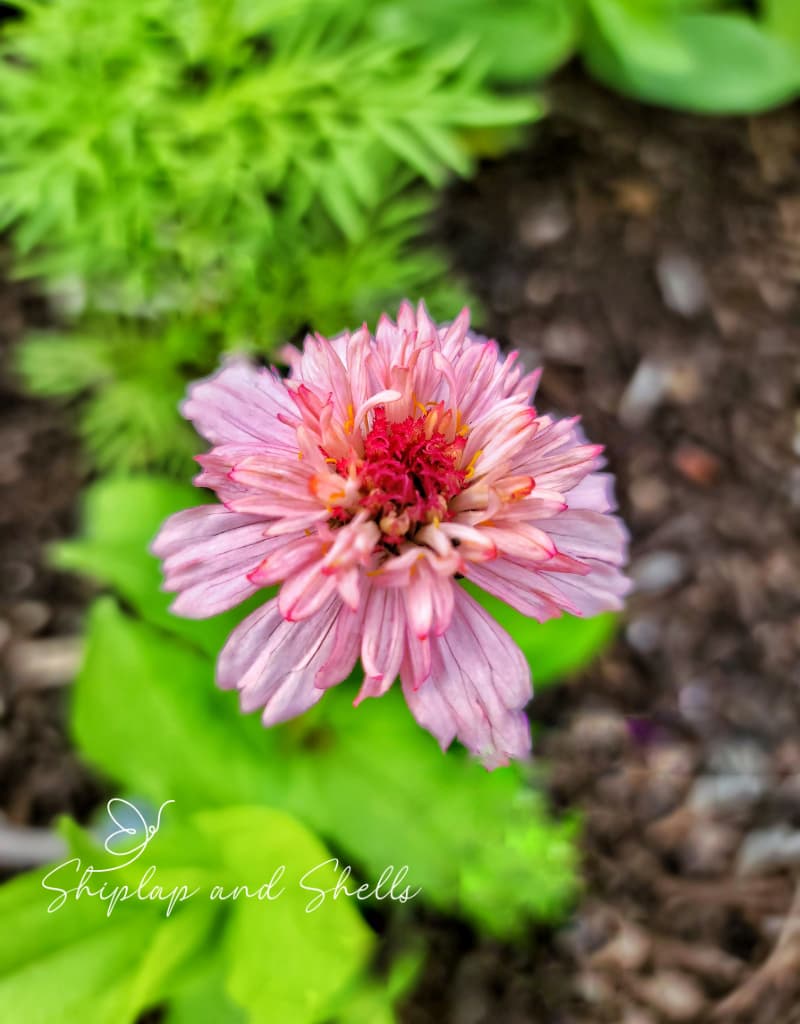
If you plan on growing a cut flower garden, zinnias will be one of your favorite flowers.
They are easy to grow and have the most colorful varieties, especially if you’re growing zinnias from seed.
If you have any questions or additional suggestions, please share them in the comments below. And be sure to share this blog post link with anyone who may find these gardening tips useful.
Until next time,
Happy Gardening!

I’m a self-taught hobby gardener. Everything I share on my blog is my opinion and what has worked for me.
Follow Me for More Inspiration
Shop my Amazon Storefront, LTK sources, and my favorite home decor, garden, and lifestyle products. When you purchase from one of my links, I earn a small commission, which helps me continue sharing all the content you expect on my blog.
Be sure to follow me on Pinterest, Instagram, Facebook, TikTok and LIKEtoKNOW.it. Do you like gardening? Join my Facebook Gardening Tips & Tricks group.

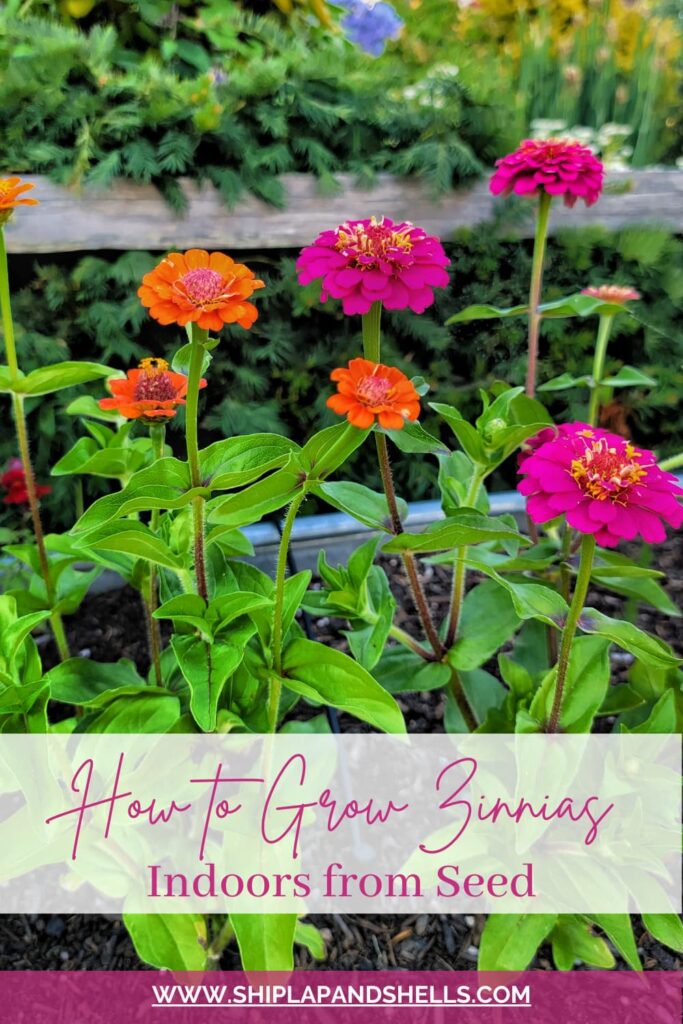


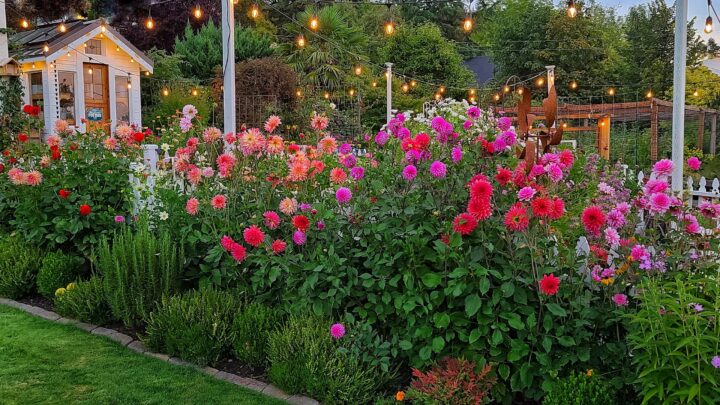
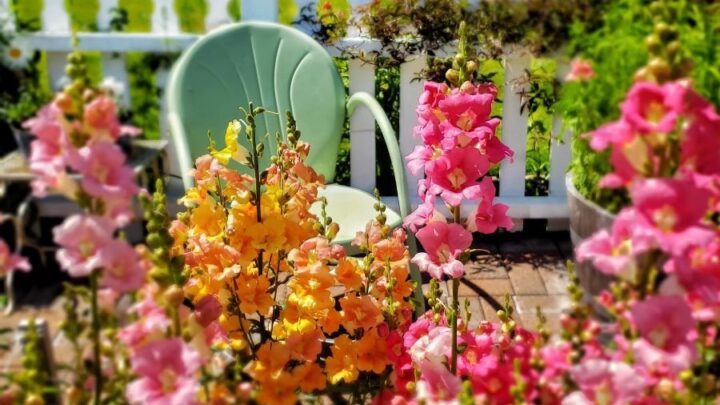
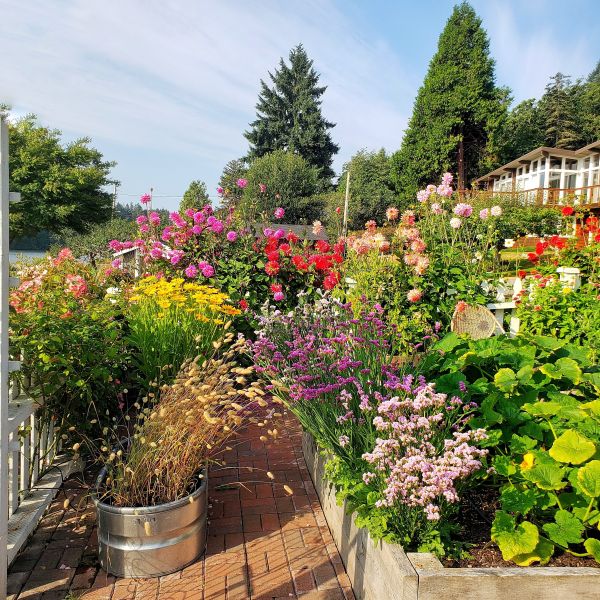
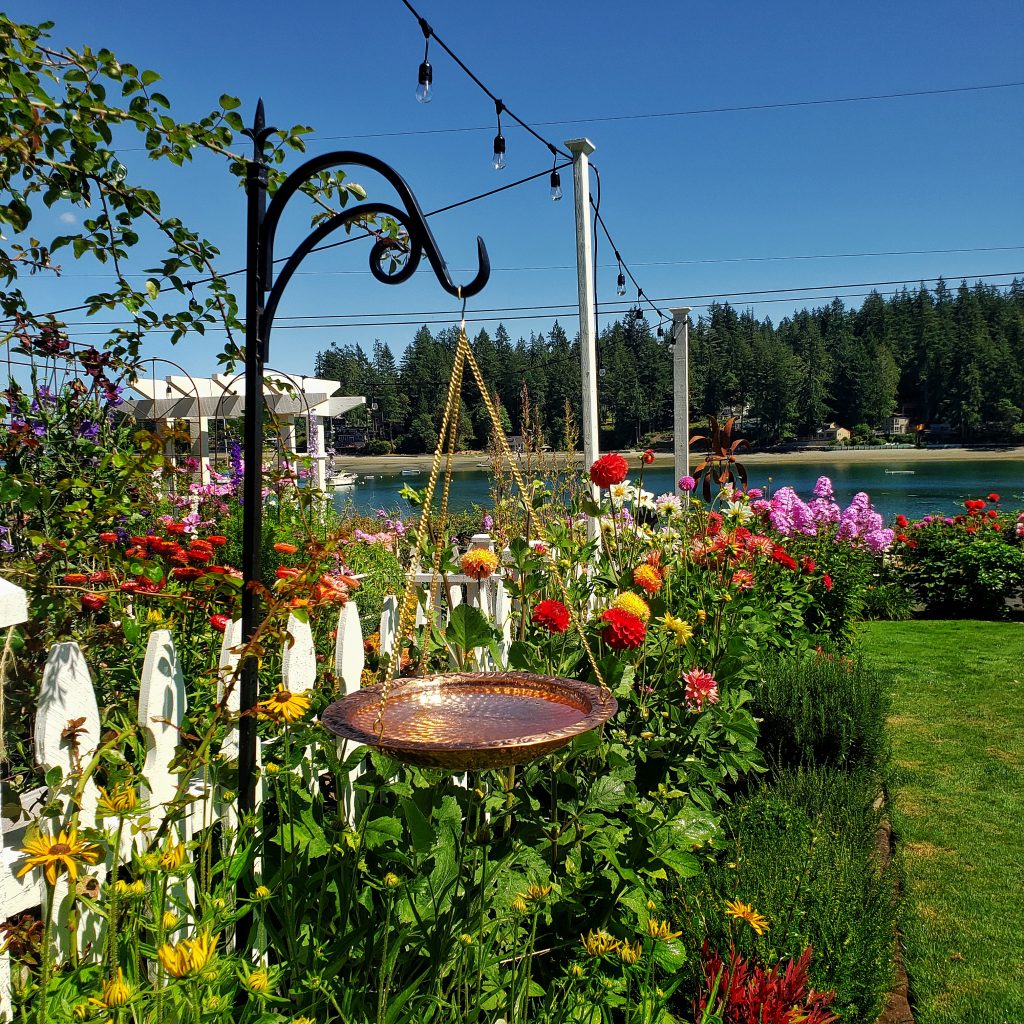
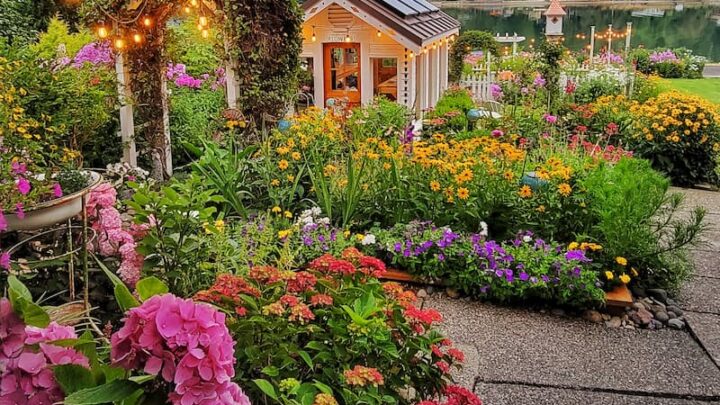
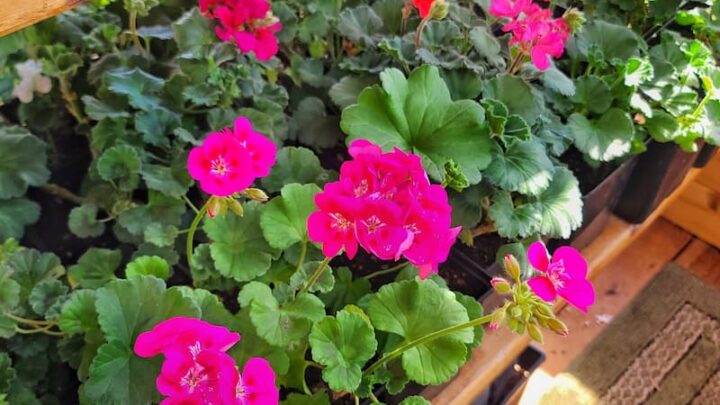
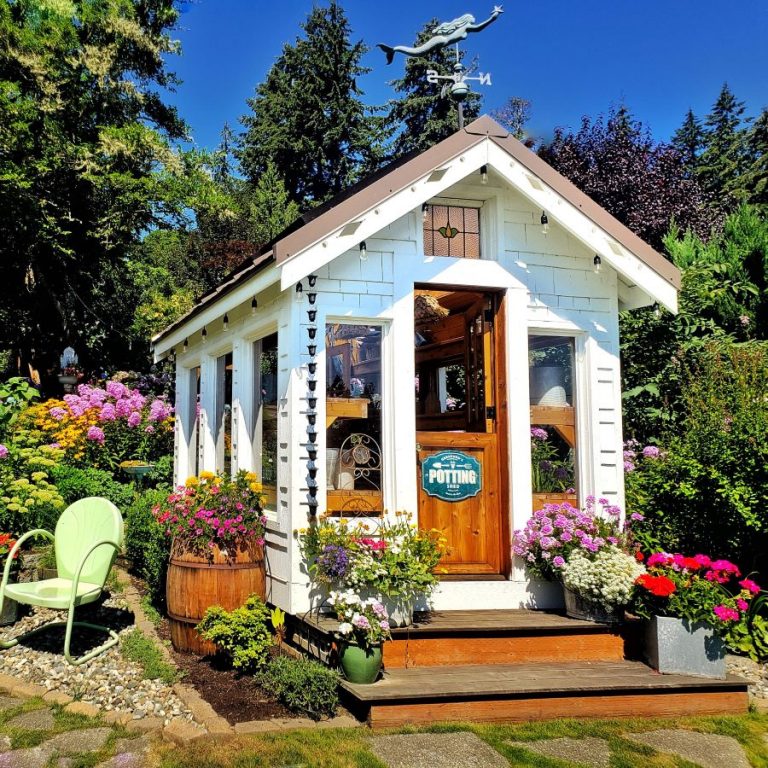
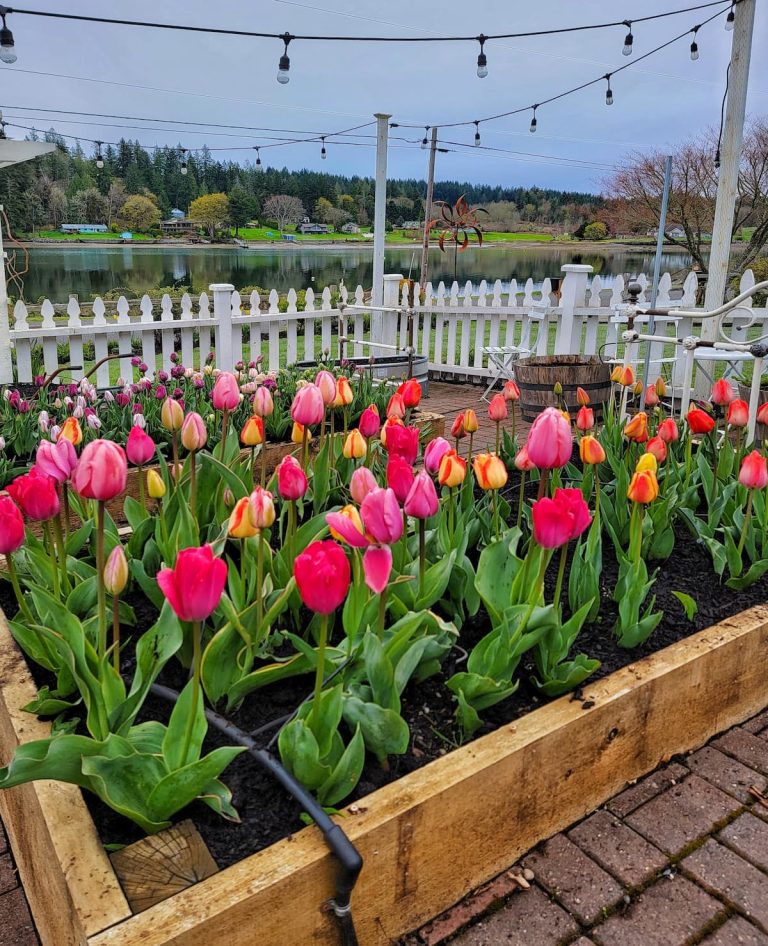
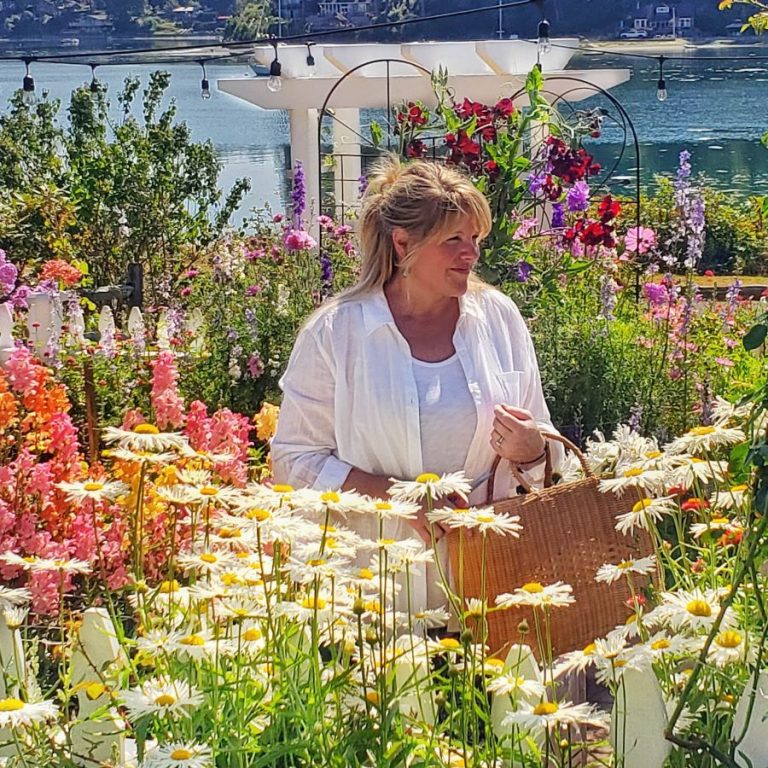
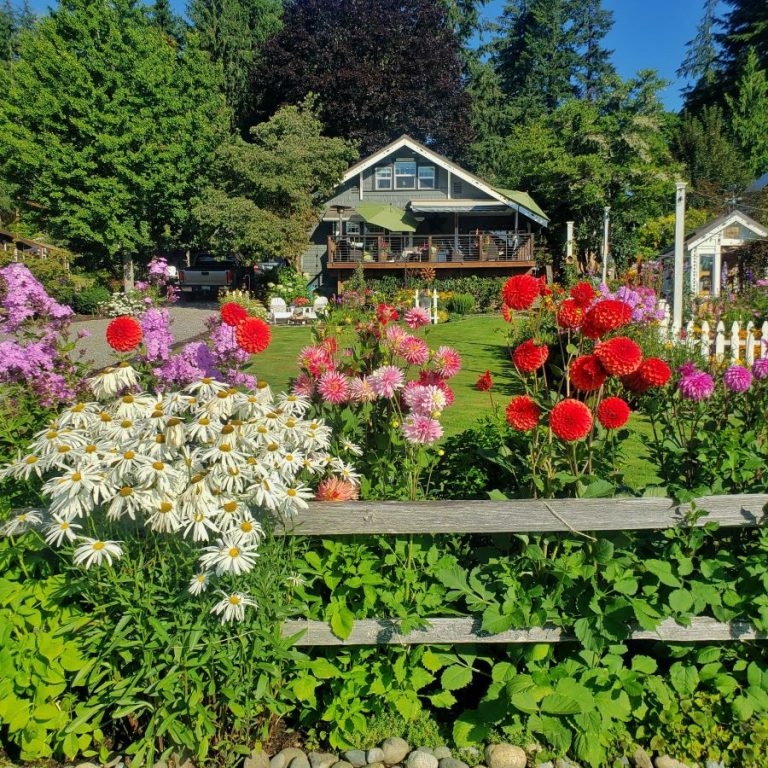
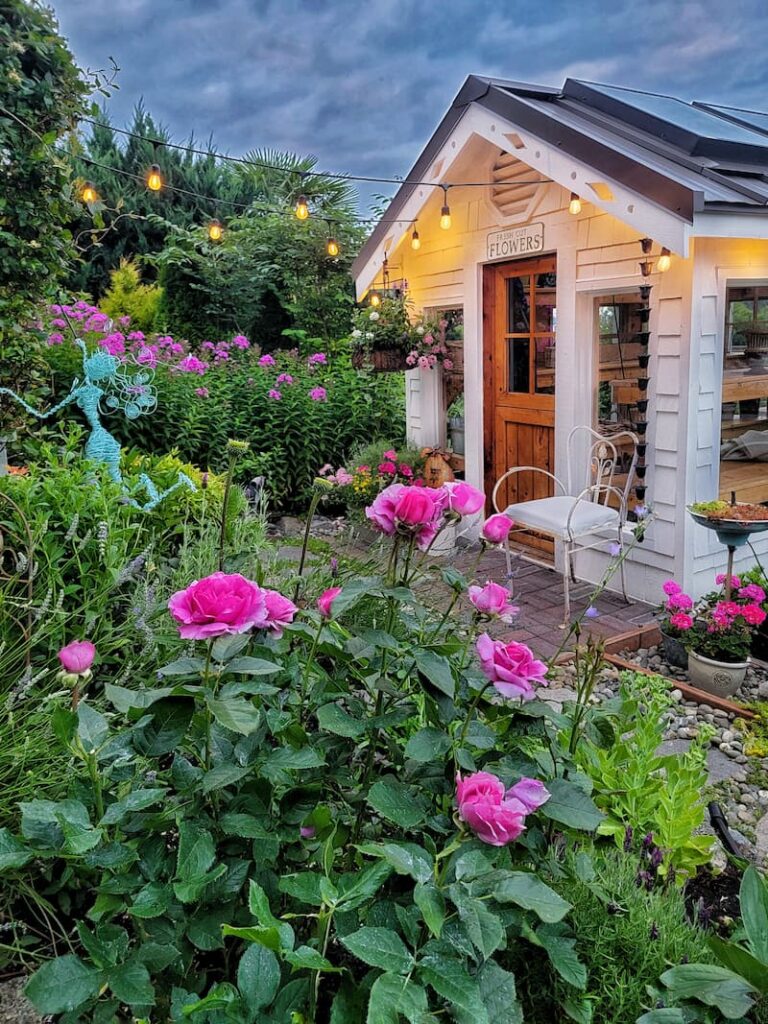
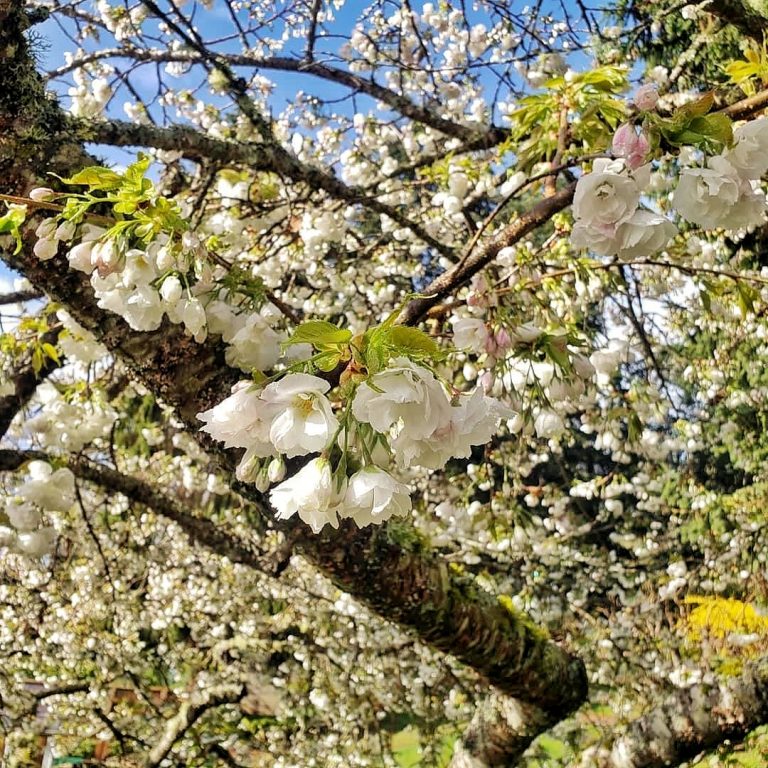
I have grown Giant zinnias to over 6’ in height they were sown by scattering and watered daily
I bet they were gorgeous!
Zinnias are one of my favorite flowers and I plant them every year, ifo on starting from seed indoors was very helpful. Thank you for sharing your knowledge.
Zinnias are such dependable and beautiful summer cut flowers. I’m so happy you found the blog post to be helpful. Thank you for being here.
It says to remember to pinch off the zinnias when they are 12 inches tall but earlier it says to pinch /cli them off above the third set of true leaves. Does this mean I should pinch them off twice?
Hi Karen,
You should pinch the seedlings above the third set of true leaves, which should be there if the plant is around 12 inches tall. Does that make sense? You can email me at kim@shiplapandshells.com if you have further questions. Thank you for reaching out.
Zinnnias are so fun to grow and I’m so excited to start them again this year. What a great post! Cant wait to see the gardens this year! xo
Such great tips. I‘lll be trying this!